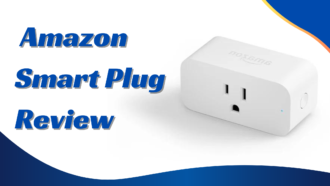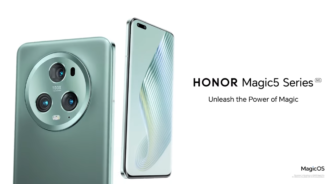What To Look For In A Dive Computer?
Exploring the deep ocean is thrilling, but it also has dangers. If you’re new to diving or already an expert, a reliable dive computer is your lifeline. This smart gadget takes the place of old-school and traditional dive tables. It gives you real-time information to help you dive safely.
When picking a dive computer, there are myriad factors to consider: type of computer, budget, air systems, algorithms, batteries, and much more. Let’s dive into these details so you can make a well-informed choice.
For those of you seeking an exhaustive evaluation of available options, I highly recommend checking this comprehensive guide on the top dive computers for scuba diving.
What Is A Dive Computer?
A dive computer is a digital device designed to provide divers with essential real-time information to ensure their safety underwater. Traditionally, divers used dive tables and gauges, which required manual calculations for planning a dive.
However, a dive computer automates this process, continuously updating data on depth, time, and even the amount of gas left in your tank. This information can be crucial for preventing decompression sickness and helping you make the most out of your underwater escapades.
Factors To Consider In A Dive Computer
Type Of Computer
When selecting a dive computer, one of the first decisions is whether to go for a console or wrist-mounted device. Console computers attach to the first stage of your regulator, replacing the standard pressure gauge and depth meter. They are generally bulkier but often offer larger displays and more detailed information at a glance.
On the other hand, wrist-mounted computers are worn like a watch and offer greater freedom of movement. These can range from the compact “watch style” to more full-sized devices. Some wrist-mounted computers come with air integration, using a wireless transmitter attached to your first stage. Choosing between a console and wrist mount boils down to personal preference and your specific diving needs.
Setting a Budget
Deciding on your budget is also crucial. Dive computers vary in cost, from as low as $150 to over $1,500. But don’t let the price tag fool you. For most recreational divers, a computer costing around $500 is more than sufficient. These models offer essential features without the bells and whistles that are often unnecessary for casual dives.
However, investing in a high-end model may be worth it if you’re a serious diver. Top-tier computers offer more customizable settings, gas mix versatility, and air system integration. Essentially, the more you pay, the more features you get, but it’s important to weigh these against your actual diving needs.
Air System Integration: Independent or Integrated?
Dive computers come in two main types: independent and integrated. Independent computers replace basic gear like depth gauges and compasses but don’t connect to your air system. They are ideal for recreational divers who don’t need real-time air tracking.
On the other hand, integrated models are connected to your air supply system. They can monitor the air in your tank and offer more precise calculations. These are generally more expensive but offer advantages for technical or more experienced divers.
Algorithms
When it comes to diving computers, it’s crucial to understand the algorithm or algorithms they use. These algorithms calculate dive times, no-decompression limits, and safety stops by evaluating your depth, time, and pressure data. Some models even offer multiple algorithms, providing a choice in how conservative or aggressive the computer’s recommendations are.
Especially for new divers, a computer with a more conservative algorithm is advisable. Even seasoned divers prefer conservative settings for added safety. If you’re susceptible to decompression sickness, it does a lot about your health. Therefore, choose a model with an algorithm that matches your diving style and physical condition.
Batteries
Battery life and type are often overlooked aspects when selecting a dive computer. Some models feature user-replaceable batteries, allowing you to switch them out yourself. This is especially useful for those who often go on multiple-day dive trips.
Conversely, older models may require professional servicing for battery replacement, including pressure testing. Given the critical role that the battery plays, it’s essential to understand its lifespan and replacement options before making your choice.
Memory and Downloading Abilities
Having the ability to download your dive information can be incredibly beneficial. This feature allows you to review and analyze each dive in detail at your leisure, providing invaluable data for improving your future dives. Some computers even offer Wi-Fi or Bluetooth capabilities for easy data transfer to cloud storage or mobile apps.
Memory size is also essential. The more dives you store, the more data you can review later. For those interested in tracking their progress and improving their technique, high memory capacity and easy downloading options are a must.
Additional Features: Backlights, Alarms, and More
Features like backlights, water activation, and alarms can’t be overlooked.
A backlight is essential for any unexpected situations, and water-activated models provide convenience by turning it on automatically upon hitting the water.
Alarms are another crucial feature. They alert you with noises or flashing lights if something requires your immediate attention.
Also, basic display features should be easy to read and offer a quick overview of your current depth, dive time, and no-fly/no-stop time.
Ultimately, the easier your computer reads and understands, the safer you’ll be.
Conclusion
Choosing the right dive computer is an investment in your safety and overall diving experience. Consider your type of diving, whether you need air integration, the importance of the algorithm, battery specifications, and data capabilities when making your decision. With this knowledge, you’ll be well-equipped to make an informed choice that will serve you well for many underwater adventures.
Additionally, Bravotello serves as a resource for comprehensive tech advice, guiding users through the latest advancements tailored for various requirements and daily activities. From software solutions to hardware reviews, the platform delivers essential information on performance metrics, operational efficiency, and crucial features.

















